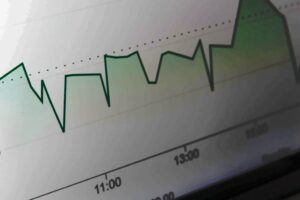Contents
Here is an example of expansion levels on an upward forex trend and you can also search out examples of how the strategy works on a downward trend, as the same principle applies of following a trend up or down. Let’s cut to the Forex chase and see how technical traders use Fibonacci retracement levels as technical signals in forex trading. 12th-century monk and mathematician, Leonardo de Pisa discovered a numerical sequence that appears throughout nature and in classic works of art.

Is it possible to develop a ‘trading system’ purely based on levels and price action. Ian is going to highlight the strength of pull back and extension levels combined with ‘price action’ at key levels. This will be based on the Elliott wave theory, but also many symmetrical patterns. For example, if you had retracement levels of .382, .500, and .618, then you would not want the .618 level to fail. You’ll also want to define extension ratios so that you know when to take your profits. Set your stop order 4 to 5 pips above your Fibonacci retracement level in a downtrend and 4 to 5 pips below in an uptrend.
Improving your Fibonacci Confluence entries with Support and Resistance
We have also prepared an article which covers more strategies you can use with forex Fibonacci Retracements. You will know how to combine Fibonacci Retracements with indicators, right time to enter the market and how to define a trend across multiple time frames. Let’s use this daily EUR/USD chart as our example of using Fibonacci retracement levels in a downtrend. It’s a lot like the uptrend retracement level analysis, only inverted. As it pertains to the financial markets, the golden ratio is applied via many forms of the Fibonacci indicator.
From there you will see the grid of 23.6%, 38.2%, 50% and 61.8% levels on the chart. These represent levels where price might find resistance – in other words where price might bounce and reverse lower. Phil Newton presents a different view of trading that he uses when break outs are not available. With the current market volatility, this is pretty much the only way that Phil is trading to take advantage of the big swing and to identify a method to jump on board some of the moves. The presentation starts with a short power point of Fibonacci and how Phil uses them as well as the strategy outline. Fibonacci ratios are a series of percentages calculated by dividing figures along the Fibonacci sequence.
- From the example used, working on expansion 100, a healthy profit would have been generated.
- Fibonacci analysis is a great way to improve your analytical skills when trying to identify support and resistance levels.
- The MT4 True RSI Indicator helps you identify the hidden levels of support and resistance on the RSI indicator.
- We ideally need to wait for prices to retrace at least 50% in point before taking off in the other direction .
- You must take other indicators, such as moving averages into account as well.
- If you had some orders either at the 38.2% or 50.0% levels, you would’ve made some mad pips on that trade.
Fibonacci calculator was invented by Leonardo Fibonacci – the first major mathematician in medieval Europe. He was born and lived in Italy in the 12th – 13th centuries. His theory of numbers has gained immense popularity and marked the beginning of one of the most powerful trading methods on the Forex market. Fibonacci sequence is a simple sequence of numbers where each successive one is the sum of the previous two. Mathematician Leonardo Fibonacci had identified a number of patterns in the sequence, which were applied in many areas, including trading. By identifying support and resistance levels, Fibonacci Calculator allows professional traders to find correction targets and trend direction in the price chart.
Chartism
The Fibonacci sequence is a series of numbers where each number is equivalent to the sum of the two numbers previous to it. 0, 1, 1, 2, 3, 5, 8, 13, 21, 34, 55, 89, 144… and on to infinity. This indicator will plot Fibonacci golden spiral on the chart. 61.8% and 161.8% might be the most important Fibonacci ratios of them all.
Usually retracements are calculated after the market has moved significantly either up or down, and seems to have flattened out at a particular price level. The most popular Fibonacci retracements levels are 61.8% and 38.2%. These are used by drawing horizontal lines across a chart at those price levels to define zones https://traderevolution.net/ of market retracement, before resuming the general trend formed by the initial large price movement. Those can be very exponential when a market has reached a major price support or resistance level. Tools derived from the Fibonacci number sequence are among the most effective in the field of Forex technical analysis.
Now, there are Fibonacci retracements that are negative (-27%, -61.8%) and we will touch on these as they basically go beyond your endpoint YET they are still valid. Yes, there are times when your Fibonacci Retracement becomes invalid. One of the most common scenarios of this is when price makes a lower-low . One follows price closely while the other cuts through price structure.

Fibonacci retracements identify key levels of support and resistance. Fibonacci levels are commonly calculated after a market has made a large move either up or down and seems to have flattened know the power of the trader umarkets forex broker and start making a profit out at a certain price level. Fibonacci retracement levels are horizontal lines that indicate the possible support and resistance levels where price could potentially reverse direction.
Fibonacci
If you had some orders either at the 38.2% or 50.0% levels, you would’ve made some mad pips on that trade. The market did try to rally, and stalled below the 38.2% level for a bit before testing the 50.0% level. The idea is to go long on a retracement at a Fibonacci support level when the market is trending UP. Our gain and loss percentage calculator quickly tells you the percentage of your account balance that you have won or lost. Before getting into that a side bit of info here is that in a graph showing either an upward trend, the peak is made up of two lines; the one that moves initially and the one that retraces back. The one that makes the initial movement upwards or downwards is called the Impulse Wave, and the one that retraces its steps back is the Corrective Wave.
For example, it was commonly believed the .618 retracement would contain countertrend swings in a strongly trending market. That level is now routinely violated, with the .786 retracement offering strong support or resistance, depending on the direction of the primary trend. Traders and market timers have adapted to this slow evolution, altering strategies to accommodate a higher frequency of whipsaws and violations. Almost all traders have a trading style or set of strategies they utilize in order to maximize profit potential and keep their emotions in check.
They would want to see when the corrective wave for the downward trend ends so that they can sell at that point before the impulse wave carries the price further down where they can buy. The magical powers of 0.618 or 61.8% are reiterated here often as after the price has retraced 61.8% of the way, it will usually start going up again. So, if a trader goes long at when the price has decreased 61.8%, there is a good probability that it will stop depreciating at that level and instead move up.
There are other ratios that can be used but it is up to you to decide how far you want to take the analysis. In addition to this ratios there are two other levels, 50% and 100%, that are often included in the analysis, although they only appear as a Fibonacci ratio at the very beginning of the series. A forex pivot point is a level based on the previous day’s price action that indicates where a market is likely to turn. Fibonacci clusters are areas of potential support and resistance based on multiple Fibonacci retracements or extensions converging on one price. When entering a sell position near the top of the large move, you can use the Fibonacci retracement levels as profit-taking targets. Fibonacci levels are considered especially important when a market has approached or reached a major price support or resistance level.
Examples of where the golden ratio occurs include the Great Pyramid of Giza, Leonardo da Vinci’s Mona Lisa, nautilus seashells, spiral galaxies, sunflowers, tree branches, beehives and human faces. The book comprises three sections, the first covering numbering from 0 to 9, as well as positional notation. He showed the practical use of the numeral system by applying it to commercial book-keeping, interest calculation, money changing and similar topics. The second section deals with a range of issues faced by merchants such as goods pricing, profit calculation and currency conversion. The author is mostly famous for the Fibonacci numbers and the Fibonacci sequence, which are introduced in the third section. To find the 61.8% ratio, all you have to do is divide each number in the Fib sequence by the one that follows it.
Really great for calling reversals and avoiding false breakouts. You will see the 61.8%, 38.2%, 23.6% Forex Fibonacci levels being used most commonly in the financial markets. These numbers are not directly from the sequence, they are derived from mathematical relationships between numbers in the sequence. The most popular ratios or levels are 23.6%, 38.2% and 61.8%.
Using the Fibonacci Retracement Rool in a Downtrend
By using the Fibonacci tool, traders usually try to identify support and resistance levels in currency markets. These levels represent areas wherein there is a high chance of a price reversal and they are extremely important price levels when they trade around the same level of Fibonacci retracements. When you combine Fibonacci levels and support and resistance levels, you essentially create target prices on your trading chart so it’s easier for you to find trading opportunities. For some reason, these ratios seem to play an important role in the financial markets, just as they do in nature.
Elliott Wave
Active market players will spend more time focused on the second category, in which Fibonacci grids are placed over short term price action to build entry and exit strategies. Forex traders use Fibonacci retracements to pinpoint where to place orders for market entry, taking profits and stop-loss orders. Fibonacci levels are commonly used in forex trading to identify and trade off support and resistance levels.
Fibonacci retracement factsheet
Based on these data, they evaluate the market situation and decide on further action – whether to buy, sell or continue waiting for the most favorable conditions for entering the market. Fibonacci Calculator has earned a worthy place among many other Forex trader tools. Fibonacci levels are nothing but a technical analysis indicator of the Forex market determining the points of the graph where breakdowns or rebounds should happen.
For uptrends, click on the Swing Low and drag the cursor to the most recent Swing High. For downtrends, click on the Swing High and drag the cursor to the most recent Swing Low. We use the information you provide fp markets review to contact you about your membership with us and to provide you with relevant content. So get yourself a coffee and let’s explore how you can grab some pips using the Fibonacci ratios in the next lesson.
